Hungarian wine barrels are among the most premium, but coopers face challenges as global wine tastes evolve.
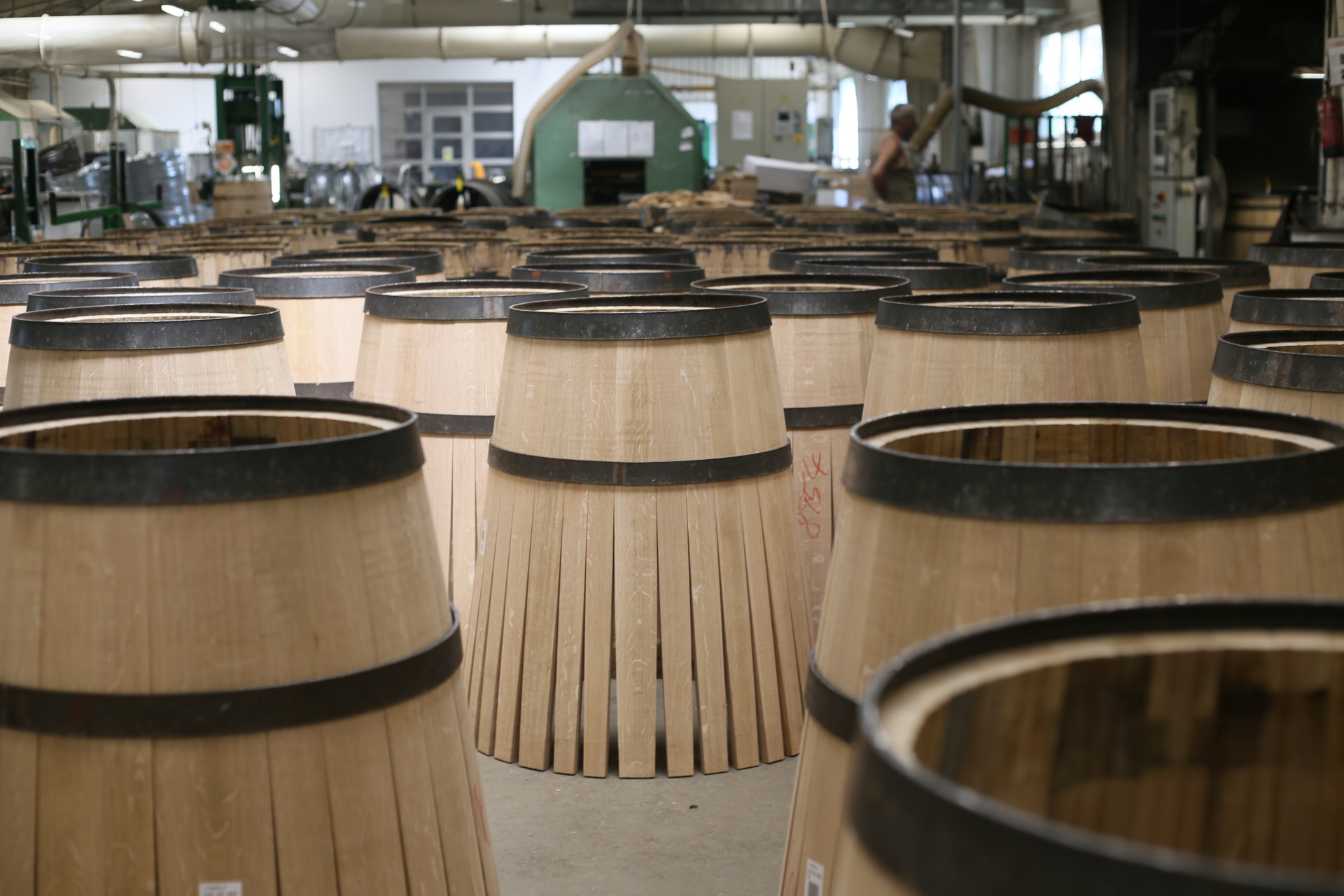
“A forest is like a deposit,” said László Hajdú, the longtime wood buyer for Trust, the biggest barrel maker in Hungary, after we set off on a forest tour from the company’s base in Szigetvár in southwestern Hungary. With a carefully trimmed mustache and a studious look on his face, László, who is in his fifties, reminded me of a high-school biology teacher. He lectured about cash-poor aristocratic families who depleted their woodlands in the 19th century as we headed up to forest-covered terrain on a hot, late-June morning. Our destination: Zselic Hill. The purpose of our trip: oak trees.
After a twenty-minute ride, we stopped at a patch of forest where cicadas provided lively background music. To my untrained eye, all the trees looked similar, but László was quick to point out the different species of oak and also field maple, hornbeam and linden trees. “Look at the shape of their bark. See how different they are?” I sort of did.
If you’re like me and spend little time thinking about the wine barrel market, it may surprise you that Hungary is among the most prestigious producers. Since the country is rich in oak trees and grapevines, coopers and winemakers have long formed a symbiotic relationship (Hungary has 22 wine regions across the country). The cooperages are usually located strategically near their wood sources, in the forests of the North Hungarian Mountains and rolling hills of Transdanubia, part of which includes Zselic.

For an oak tree to even begin to arouse László’s interest, it needs to be at least a hundred years old, mature enough to have developed a wide trunk. The greatest challenge for coopers is that most trees don’t grow in a straight vertical line. Some have twisted trunks, which happens when a tree is challenged for light by a too-close neighbor and changes its direction of growth. Others might have misplaced centers or too many knots. Only a few percent of trees check all of László’s boxes. “There’s no perfect tree,” he said wistfully.
Generally, the state-owned local forest manager – SEFAG Zrt. in the Zselic – is in charge of cutting the trees. This always happens in the dormant winter period, when the trunks are drier. After carefully inspecting each log, László and other wood buyers purchase the wood through auctions or long-term fixed agreements. Recently, flooring companies from northern Italy have been driving up prices at the auctions, much to László’s frustration. “The government should do something about it as the Croatians did when this happened over there.”
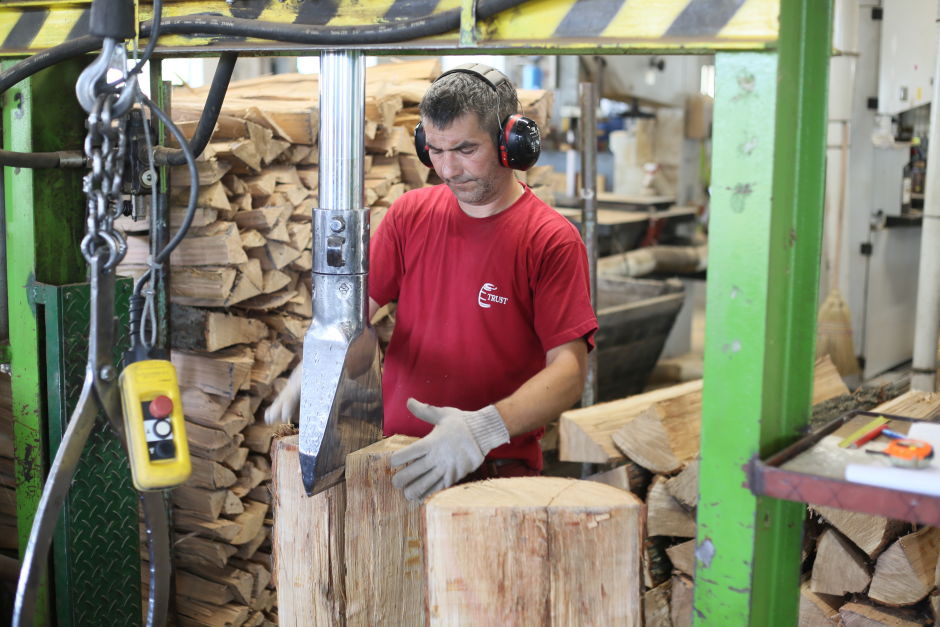
Once the logs arrive at Trust’s stave mill, it’s up to László’s team to turn them into rectangular planks, also called staves, that will form the barrels. The noisy production floor was filled with workers operating chainsaws, enormous splitting machines, and table saws. “We track every piece of wood by origin from start to finish,” said László with pride. “This batch came from the Zemplén Mountains near Kassa.” Barrels are made only from heartwood, the dense inner core of the trunk, because the outer layer is prone to rotting and the center too knotty. This means that eighty percent of each log ends up as scrap and being sold as firewood – a regular oak tree yields only about two average-sized (225-liter) barrels.

The staves are then left in the open air to “season” for two to four years. “Exposed to the rain and the sun’s rays, the wood’s harsh tannins soften, aroma molecules are released and new ones created by enzymatic activity,” said András Kalydy, the General Manager of Kádár Hungary, another major cooperage in Hungary. A too-short seasoning period leaves sharp and “green” flavors in the wood, while over-aged staves break easily and impart fewer interesting flavors to the wines.
Before wooden barrels became the standard during the Roman period, winemakers used fired clay amphoras to store and transport the wines. Barrels, an invention of the Gauls in the Rhone-Alpes, were lighter, less prone to breakage, and easier to move due to their round shape – important logistical benefits for an ever-growing Roman army’s daily wine intake. Although pine, chestnut, and acacia were also common, oak became the choice wood because it was the most prevalent tree.
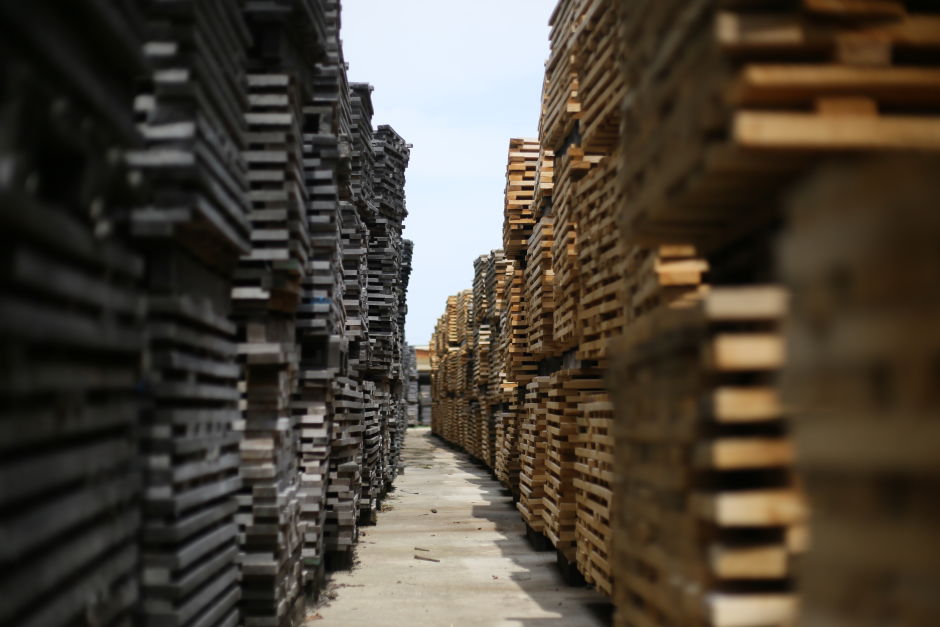
No doubt, the highlight of visiting a cooperage is catching a glimpse of the production floor: fires burning, hammers striking, men working with and against the elements. At European Coopers, based in Palotabozsok, I was guided by Kristóf Flódung, a veteran cooper who’s been in the business for more than fifty years. In 1997, Kristóf’s barrels caught the attention of Antinori, the famous Italian wine conglomerate that owns a nearby winery (Tűzkő), and soon the two launched a cooperage together under Kristóf’s leadership. Still today, Kristóf’s team in this small village in southern Hungary makes nearly all of Antinori’s barrels, a thousand of them each year (European Coopers works with other wineries, too).
“It takes about half an hour for the heat to soften the staves, then they can be formed into a barrel shape,” explained Kristóf as a cooper before us fastened the bent staves with an iron hoop. Next step: toasting. The heart and soul of barrel making. The heat transforms the oak’s components into new flavor molecules, which the wine absorbs during aging. The breakdown of lignin, for example, produces the typical vanilla flavors — and also toasty and spicy aromas — that people tend to associate with barrel-aged wines. The wood’s astringent tannins, whose biological purpose is to deter insects, together with tannins from the grape skins and seeds adds structure to the wine.
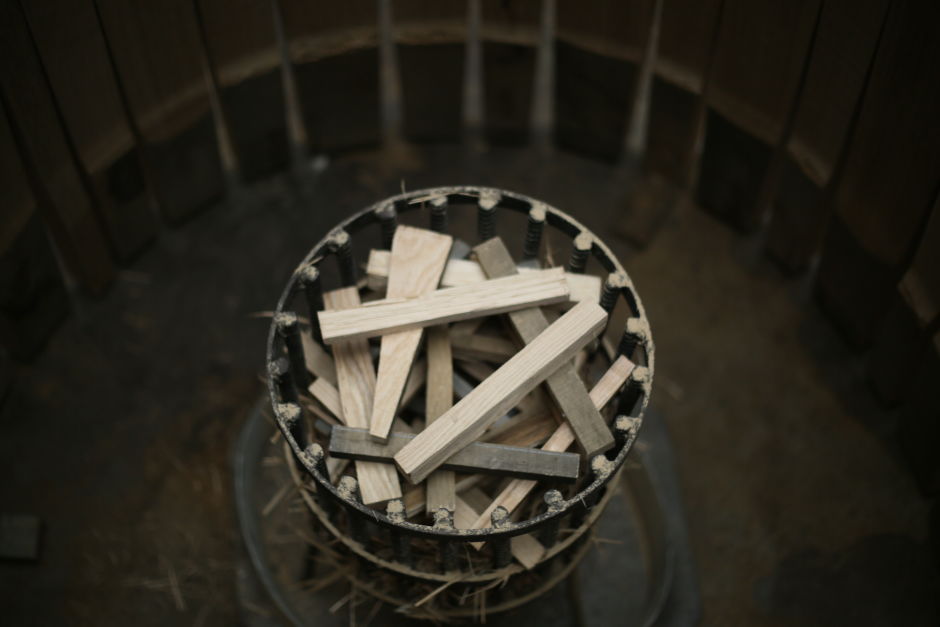
A skilled cooper is a multitasker. He constantly adjusts the fire so that the inside of the staves reach, but don’t exceed a temperature of about 190 degrees Celsius (370 Fahrenheit), while rotating the barrel around the flames to ensure an even distribution of heat. “We don’t want burnt flavors. I always tell the guys to go gently,” said Kristóf. A sensor is there to gauge the temperature, but experienced coopers simply feel the outside of the barrel with their hands. When the toasting was finished, Kristóf nudged me to smell the smoking hot barrel, which emitted wonderful aromas of baked bread.
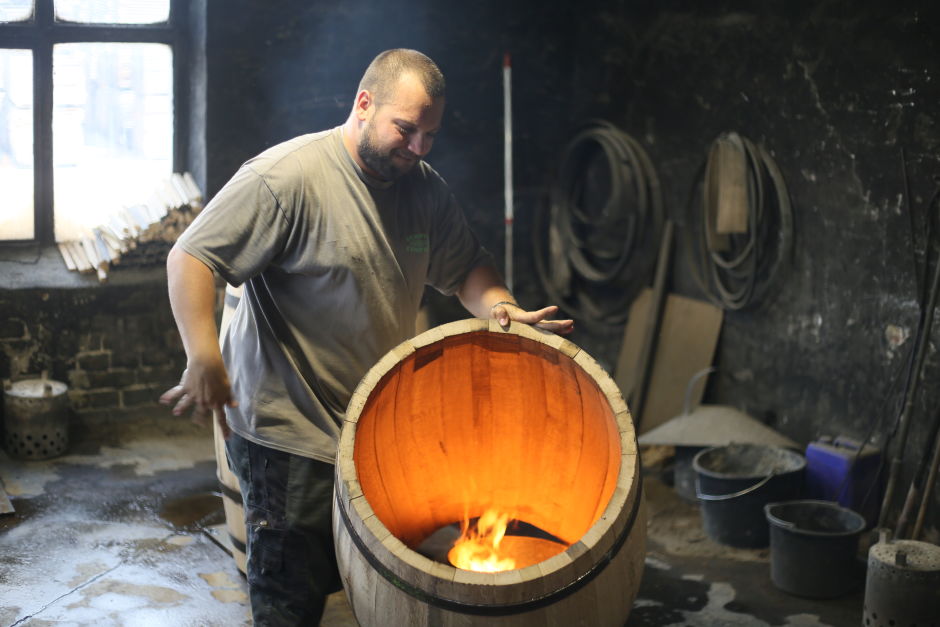
Coopers across Europe produce barrels from two species of oak. As a rule of thumb, Quercus Petraea is pricier and has more aroma molecules than Quercus Robur, which is higher in tannins. However, soil compositions, forest management practices, and toast levels can upend this calculus, and most barrels are made from a combination of the two species.
France is both the biggest and most expensive producer of wine barrels globally. A standard 225-liter barrel made in Hungary may sell for €550, whereas a comparable one from France can easily run more than €700 (those produced in the United States, also a major player, are generally cheaper than both). I wondered if that’s because French barrels are better. People in Hungary think it’s a matter of marketing and long-held perceptions.
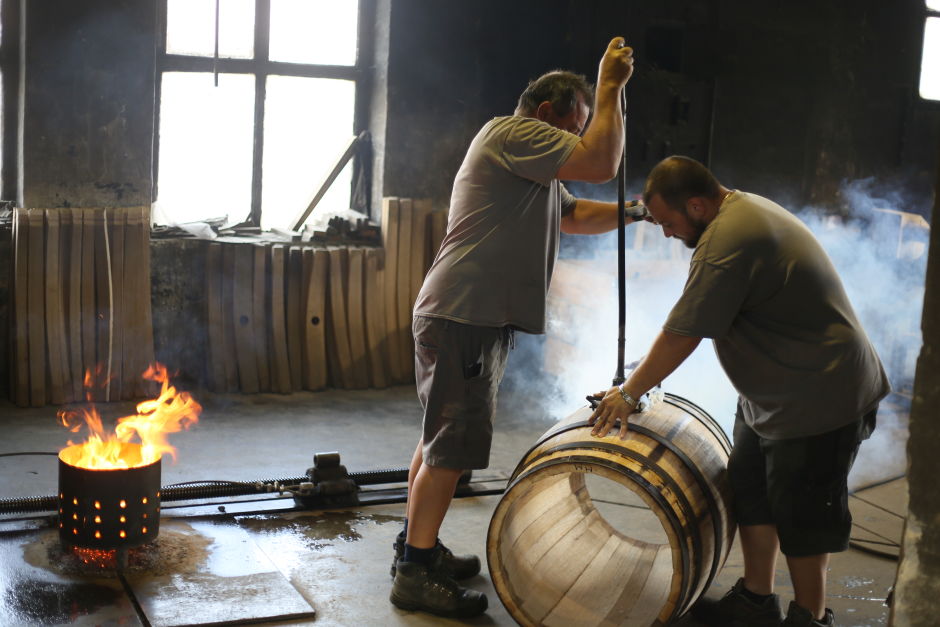
“There’s this self-reinforcing belief across the winemaking world that French barrels are the best. We have some clients parading their French oak in the marketing materials even though most of their barrels come from us in Hungary,” said András Kalydy. “This is less true for the American market, which tends to be more open to countries outside of France.” In fact, most of the 30,000 barrels produced in Hungary are sold to winemakers in California.
If you’ve been to a wine tasting, you know how quickly it can disintegrate into a shouting match of tasting notes – “orchard fruit!”; “apricot!”; “kerosene!” – with seemingly little common ground. People’s capacity to detect aromas varies, and even those smells that are registered can be perceived differently based on a person’s mouth pH, for example. The bigger barrel makers, such as Trust and Kádár Hungary, often work with laboratories to remain objective.
“We can measure hundreds of aroma compounds that are found in wine,” said Ignác Ruppert, who heads a research lab called Cellarius, which is affiliated with Trust. “This way we know, for example, the exact amounts of vanilla, bitter chocolate, or caramel flavors that make their way into the wine at a given level of toasting.”
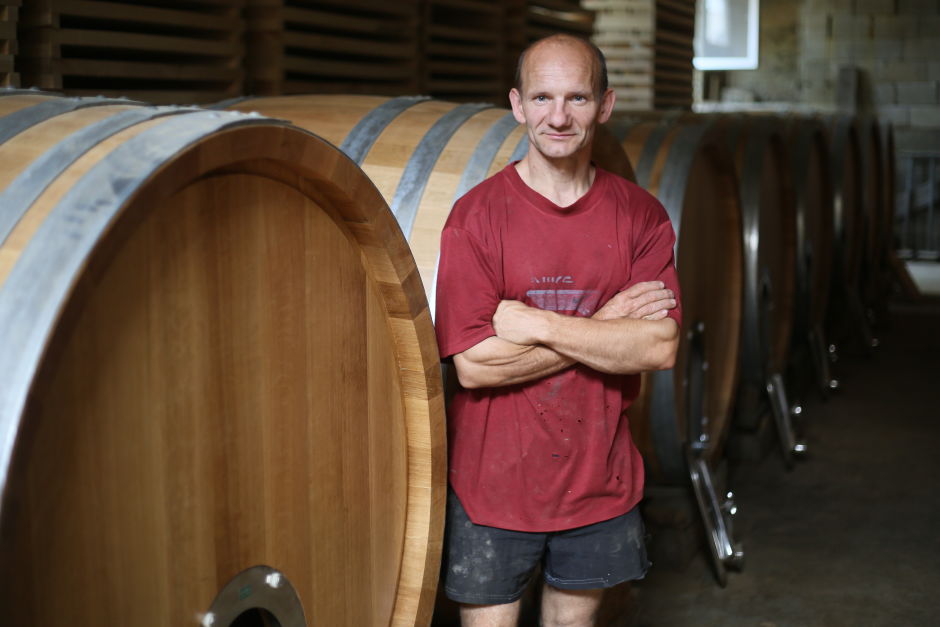
These oak-induced flavors are most pronounced when winemakers use new barrels. In the 1990s and early aughts, it was fashionable to mask wines with the pronounced taste of new oak, but the pendulum has now swung back. “I don’t want my wines to be dominated by oak,” said Péter Wetzer, who makes some of the best blaufränkisch in Hungary. To achieve this, Péter relies on large (1,200-liter) oval vats or used barrels that have already released much of their flavors.
Younger winemakers in Hungary, especially those focused on natural wines, also think twice about traditional oak barrels. “I don’t like the flavor of new oak, but I do like the fact that the wines can breathe in the barrel. It improves their flavor,” said Dorka Homoky, one of the rising stars in the Tokaj wine region. She was referring to the minute amounts of oxidation through the porous wood that adds complexity and smoothes out tannins. “I recently bought a plastic container from Germany which is also porous. I look forward to comparing the results.”
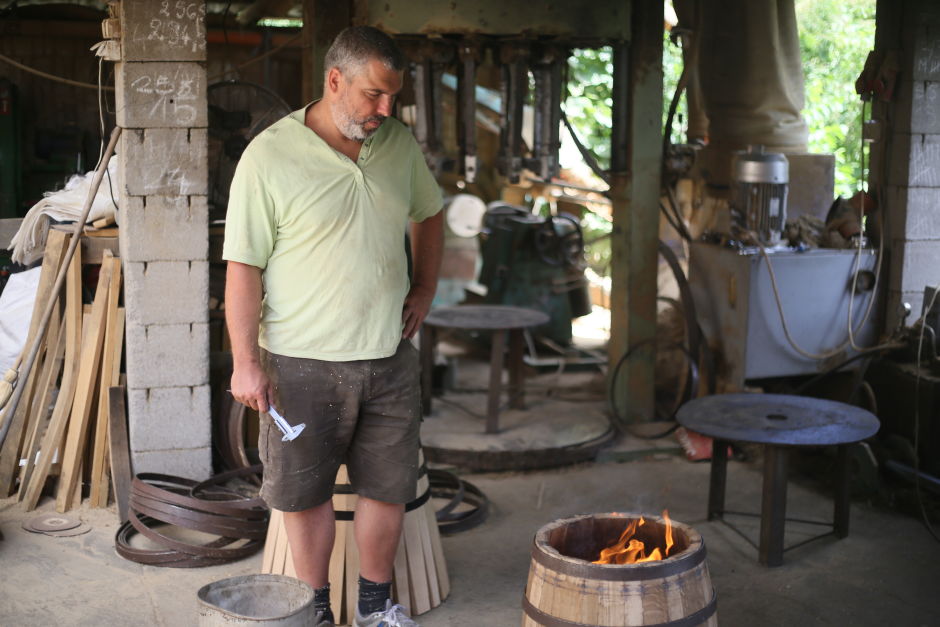
Zoltán Heimann Jr. studied oenology at the prestigious Geisenheim University in Germany before joining the family winery in Szekszárd, a red-wine region in southern Hungary. “The flavors of the barrel work well in certain styles of wines, such as a Rioja, a Bordeaux, and also in some of our blends. But it’s also true that we’ve cut back on aging.” In addition to oak barrels, Heimann uses ceramic containers that are completely neutral and retain more of the wine’s fruit flavors while allowing for microxidation.
Such technical decisions by the wineries have real-life consequences for coopers. András Miklóssy runs a family cooperage in Erdőbénye, in the heart of the Tokaj wine region; for decades, his small team was kept busy by Oremus, one of the leading wineries. “A couple of years ago, they decided to use less oak with their wines. We went from making 4-500 to 50 barrels a year for them,” said András. “Only three of us are left in the company now, I had to lay off everyone else.”
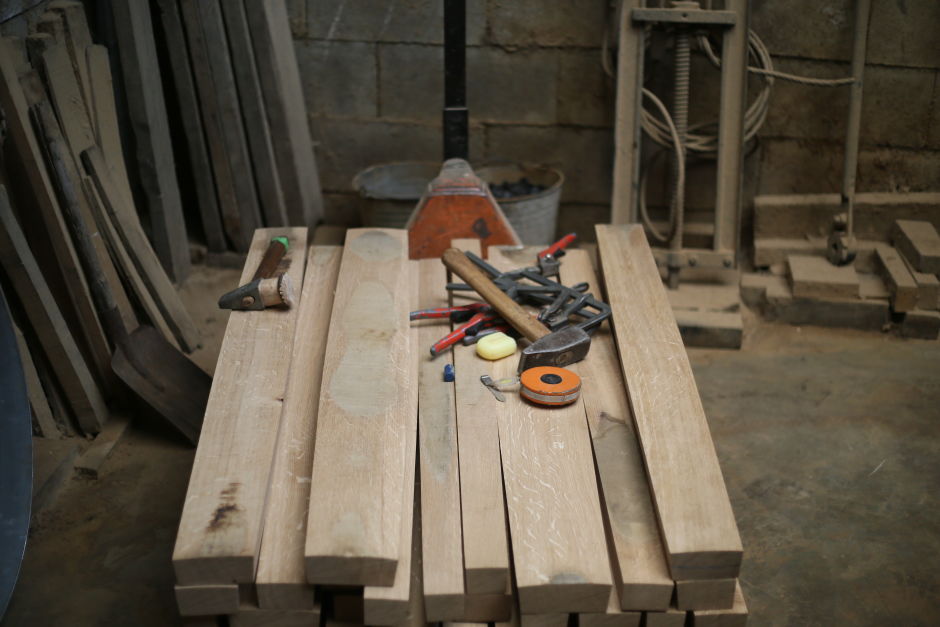
The bigger cooperages in Hungary respond to these headwinds by offering more choices to the wineries. Last year, Kádár Hungary made 164 different types of barrels, experimenting with various combinations of stave types, seasonings, sizes, and toast-levels, among other things. “They have been very innovative. In terms of how to season the staves to retain more fruit and how to be more consistent about toasting,” said Zoltán Heimann Jr.
For Szepsy, perhaps the most prominent winery in all of Hungary, barrels are part of the future. Working closely with local coopers, they’ve conducted double-blind experiments to find what they believe is the optimum. “Our barrels are made from the local Zemplén oak using staves with tight grains that were aged for four years and toasted to light or medium-light levels. Our goal is to express what Tokaj and the furmint grape are about and this combination works best for us,” said István Szepsy Jr., who buys most of its barrels from Kádár Hungary.
Making barrels is an expensive undertaking because the years-long aging of staves locks up precious resources. “The value of our inventory exceeds our annual sales,” said András Kalydy. The three biggest Hungarian barrel producers are all owned by cash-rich foreign companies such as Antinori, allowing them to invest in new machinery and benefit from knowledge transfer and distribution. Kádár Hungary, for example, is a joint venture between an American family and Chêne & Cie, a French holding company, which also owns the prestigious Taransaud cooperage in France.
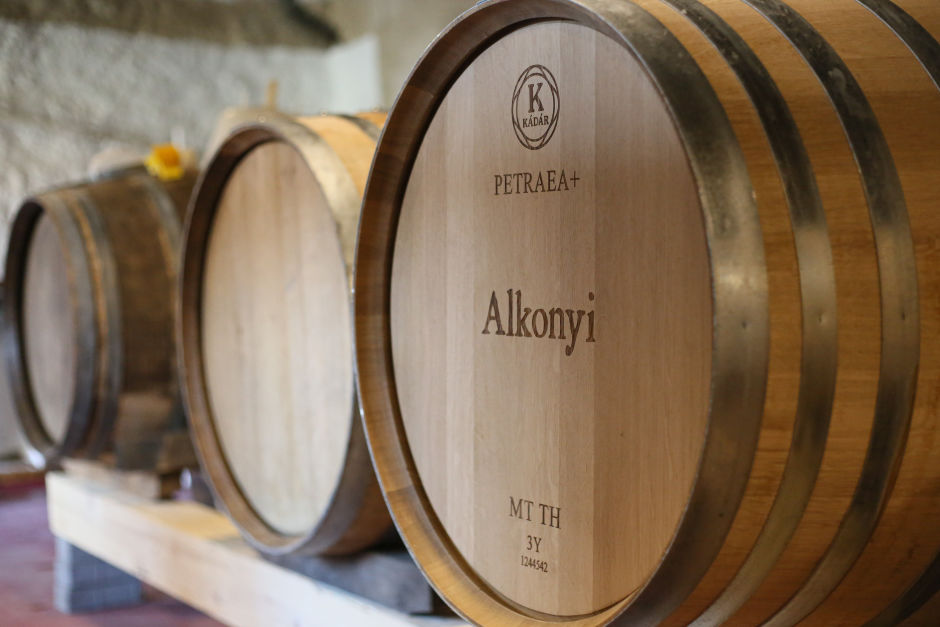
With all this barrel talk, it’s worth remembering that only the most premium wines ever see a barrel – about five percent of the total globally. The remainder consists of the mass produced, wallet-friendly bottles one often finds on supermarket shelves. Those wines are aged in large steel tanks without the extra effort and cost of oak barrels (producers may throw in oak chips, pellets, or staves to imitate the flavors).
In this highly industrialized wine world, oak barrels may signal to consumers a more craft-based approach to winemaking. “Only those family wineries with a unique story to tell will survive the low-priced competition,” said Zoltán Heimann Jr. “Using handmade, wooden barrels is part of that story.”